Psoriatic arthritis, or PsA, is a long-lasting disease that causes joint inflammation. This condition typically occurs in individuals with psoriasis or those with family members afflicted by this disease.
The manifestation of skin psoriasis often happens before arthritic symptoms appear. Surprisingly, it's not just limited to affecting your skeleton. Other parts, like the eyes, can also be impacted. It also can speed up the progression of conditions like atherosclerosis and its accompanying complications.
The disease can have a very diverse course – from mild to severe forms, leading to joint destruction and disability.
Psoriatic arthritis and psoriasis are autoimmune diseases. This means that, for some reason, the immune system overreacts and starts attacking the body’s cells. In psoriasis, skin inflammation causes the appearance of discolored skin patches covered with scales. As a result, these areas of skin are thicker and are called plaques. Also, the nails become more viscous and look pitted.
In most people with psoriatic arthritis, the disease occurs in periods of flare-ups and remission.
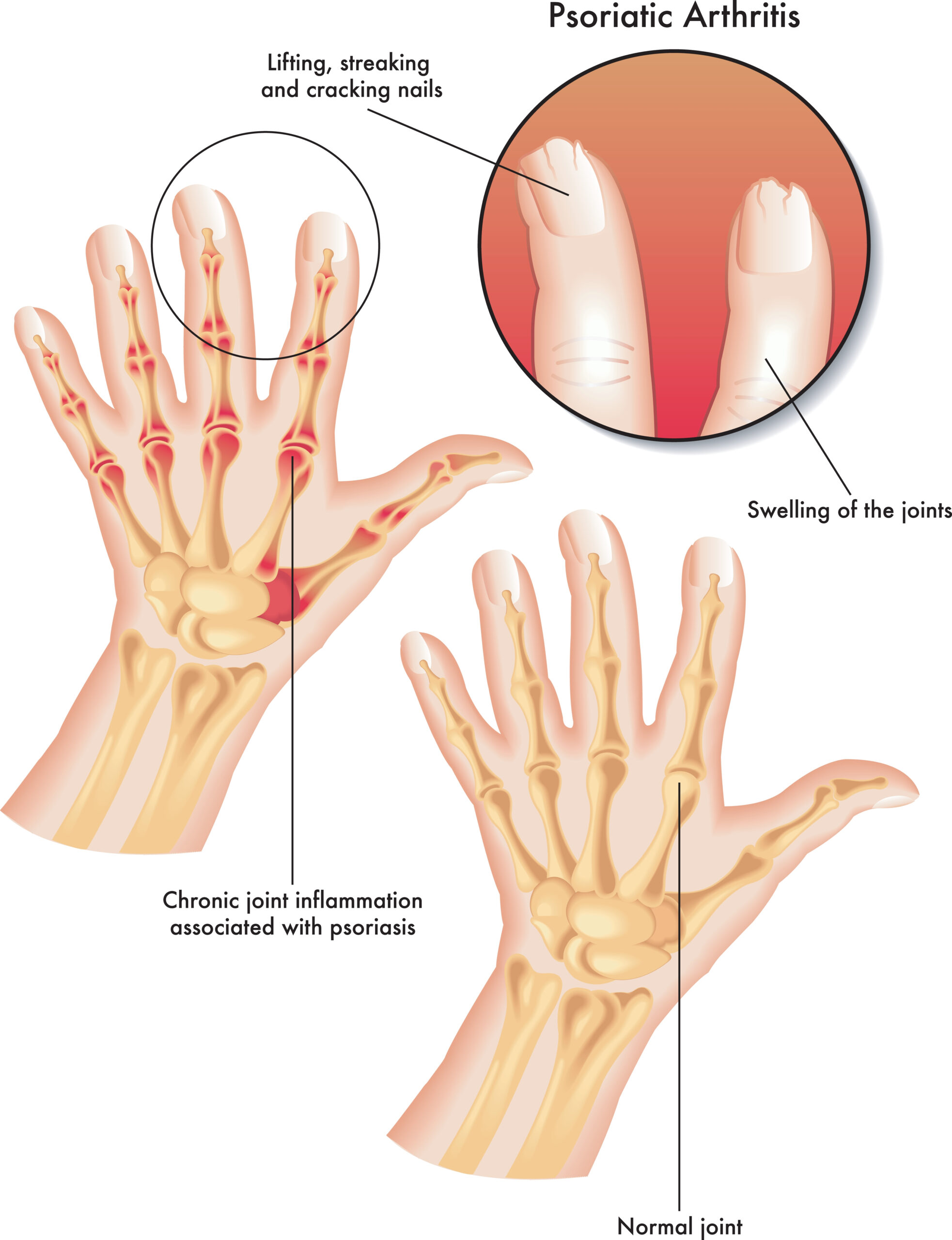
If you have psoriatic arthritis and psoriasis, your immune system starts attacking healthy cells and tissues. This causes joint inflammation and overproduction of skin cells. The exact cause of immune system overreaction is not known. An additional factor in people with a genetic predisposition likely triggers the abnormal inflammatory process. The triggering factors include:
Psoriatic arthritis affects around 1% of the population. Among people with psoriasis, PsA affects up to 40%![]() of patients.
of patients.
Psoriatic arthritis most often occurs in people between 30 and 50. It affects men and women equally. However, it can affect anyone. Experts distinguish several risk factors![]() that raise your chances of acquiring PsA. These include:
that raise your chances of acquiring PsA. These include:
There are five forms of psoriatic arthritis:
Psoriatic arthritis has a varied course, depending on the degree of involvement of the joints and other organs. It may manifest itself in only one location (e.g., as recurrent dactylitis) or affect many joints. Symptoms of psoriatic arthritis most often appear in people with already diagnosed psoriasis or simultaneously with skin lesions. However, sometimes psoriatic arthritis begins in people without skin symptoms of psoriasis, which sometimes poses a problem in making the diagnosis.
The disease usually has periods of flare-ups, followed by remission when symptoms disappear entirely or partially. General symptoms, such as fatigue, fever, or general malaise, usually accompany high disease activity.
The symptoms of psoriatic arthritis![]() concerning the joints include:
concerning the joints include:
Throughout the illness, various symptoms manifest in joints and concern other body organs and tissues. These include:
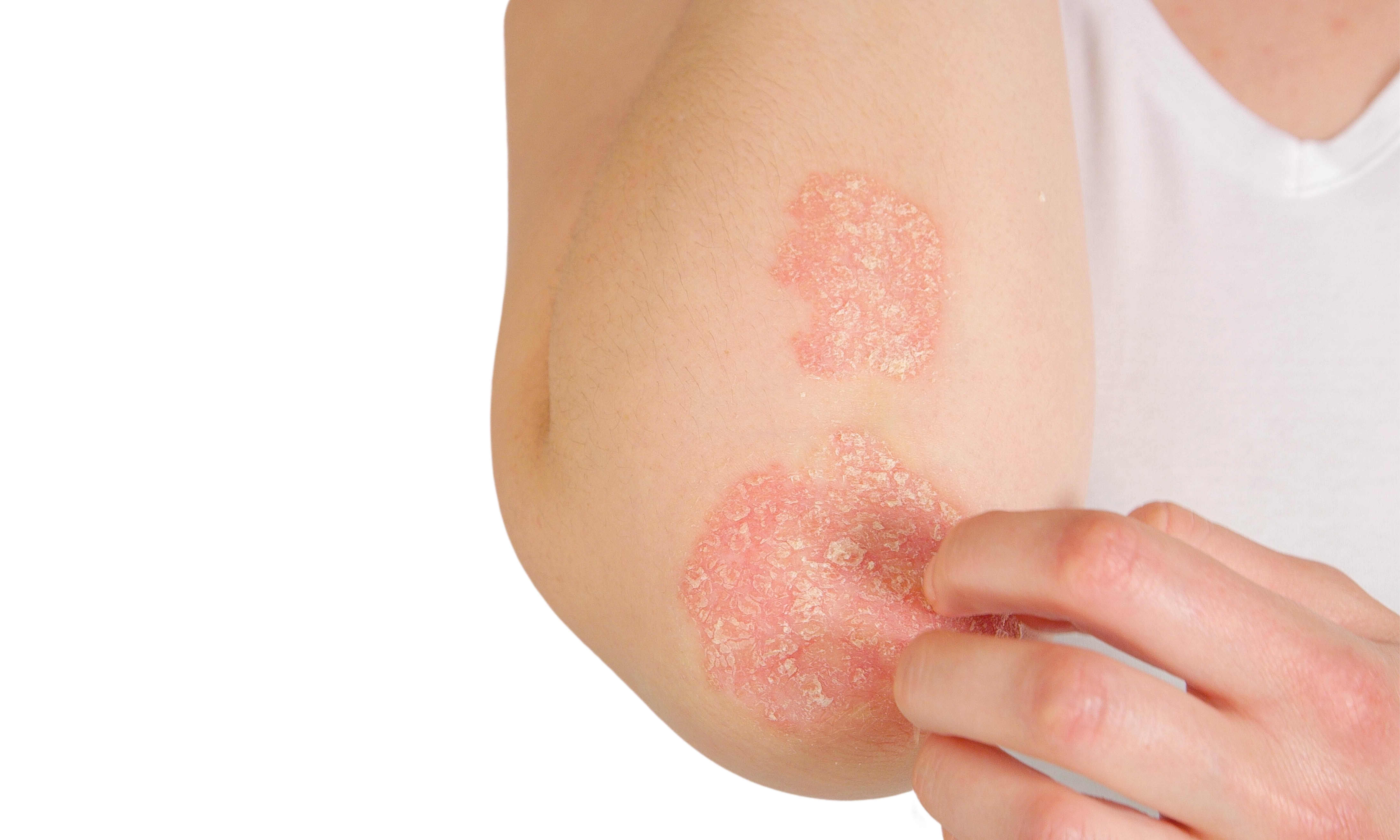
If the doctor suspects psoriatic arthritis, they will ask you about the current and previous condition of your fingers, toes, and nails, such as onycholysis (your nail separating from the skin beneath it), nail pitting, and bleeding under your nails. The doctor will also ask about psoriasis symptoms and joint pain.
At your appointment, the physician will inspect your joints for signs of inflammation, such as redness, swelling, or pain. A comprehensive skin examination is also conducted to identify symptoms like reddened areas with silver scales, pus-filled blisters, or tiny crimson spots, which could signal psoriasis manifestations on the skin.
There is no specific test for psoriatic arthritis. However, your physician may still run some blood tests to exclude other medical conditions. They may check your blood for rheumatoid factor (RF) since one of the few features specific to PsA is the absence of rheumatoid factor distinguishing it from rheumatoid arthritis. To confirm the diagnosis of psoriatic arthritis, doctors mostly use the CASPAR criteria![]() :
:
| Clinical feature | Points |
| Skin psoriasis (present/family history) | 2/1 |
| Nail lesions | 1 |
| Dactylitis (finger inflammation) | 1 |
| Absence of rheumatoid factor (RF) in the blood | 1 |
| Near-joint new bone formation | 1 |
Getting at least three points using this criteria confirms the diagnosis of psoriatic arthritis.
If the doctor suspects spondylitis form, they perform scans of the spine and sacroiliac joints. Ultrasound of the joints is also helpful in further assessment of the disease, as it allows for detecting signs of inflammation in the joints and tendons. Patients with symptoms of conjunctivitis or uveitis require an ophthalmological examination.
The goal of treatment for psoriatic arthritis is to achieve remission. Moreover, the treatment of psoriatic arthritis is aimed at inhibiting further progression of the disease, which, over the years, may lead to the patient's disability.
Anti-inflammatory drugs, including non-steroidal anti-inflammatory drugs (such as paracetamol) and corticosteroids, are used for treatment to fight the inflammation in the joints.
Drugs that suppress the immune system and disease-modifying medications are used in more severe forms of the disease.
It is crucial to start treatment as soon as possible to prevent disability and other complications of the disease. The treatment method depends on the course of psoriatic arthritis and must be adapted to each patient. The doctor will determine the treatment, taking into account the activity of the disease, the degree of damage to joints and other organs, and comorbidities.
In some people, joint aspiration, which is the removal of the fluid from the joint using a needle, might be necessary, and sometimes, when the disease destroys the joint, replacement surgery is performed.

When treating psoriatic arthritis, apart from the use of drugs, other therapeutic methods are essential. These include:
If you have psoriatic arthritis and are planning a pregnancy, it is crucial to inform your doctor about it. Psoriatic arthritis is not a contraindication to having children, but pregnancy should be planned to modify the treatment![]() early enough, as most drugs may harm the fetus.
early enough, as most drugs may harm the fetus.
People with psoriatic arthritis are likely to develop other medical conditions![]() , such as:
, such as:
Other psoriatic arthritis complications stem from decreased bodily movement. The discomfort in joints can make participating in workouts difficult. Hence, seeking medical assistance and starting treatments is vital to maintain mobility and avoid disease-related complications.
Since the cause of immune system attacks on joints in PsA remains unknown, there is no specific way of preventing psoriatic arthritis. However, there are risk factors that have been proven to higher your chances of getting it, so avoiding it seems reasonable:
Psoriatic arthritis is a chronic disease and, in most cases, lifelong. Quite often, however, it is mild, with long periods of remission.
Available treatment methods allow long periods of remission and normal functioning. Unfortunately, in some patients, the disease has an aggressive course and leads to severe joint deformations and disability.
If you have psoriasis, you should inform your doctor if you experience symptoms such as joint pain, swelling, stiffness, or redness of the skin around the joint – these may be the first symptoms of psoriatic arthritis. Joint pain and swelling require consultation with a rheumatologist to establish the diagnosis as early as possible and apply effective treatment.
If you have psoriatic arthritis, you should urgently contact your doctor if the symptoms worsen despite treatment or you experience symptoms such as eye pain, redness, or vision problems – these may be symptoms of uveitis requiring immediate ophthalmological treatment.
A rheumatologist treats people with psoriatic arthritis. However, patients are often also treated by a dermatologist and an ophthalmologist in case of skin lesions or ocular symptoms of the disease.
Table of Contents
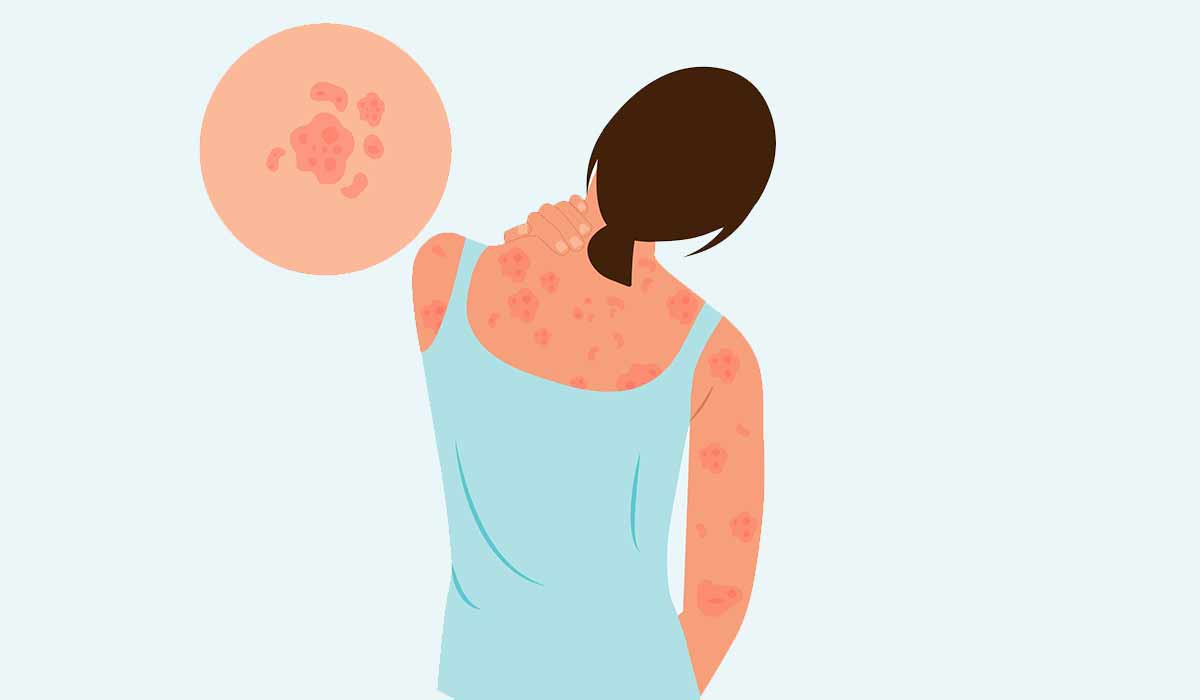
Psoriasis is characterized primarily by skin lesions that result from impaired epidermal regeneration. Learn about all types and signs of… read more »

Muscle pain and stiffness – these can be the first symptoms of arthritis. Learn about the most common types of… read more »
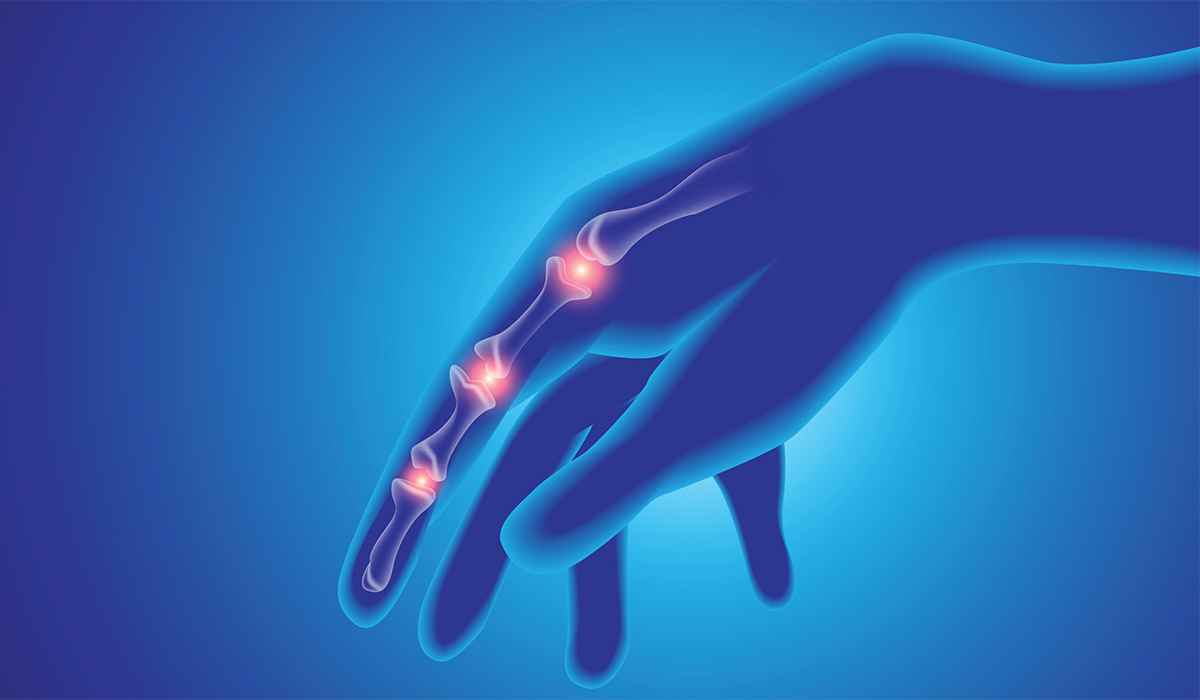
Rheumatoid arthritis is a chronic, progressive autoimmune joint disease. What are its causes? What are the symptoms of the disease… read more »
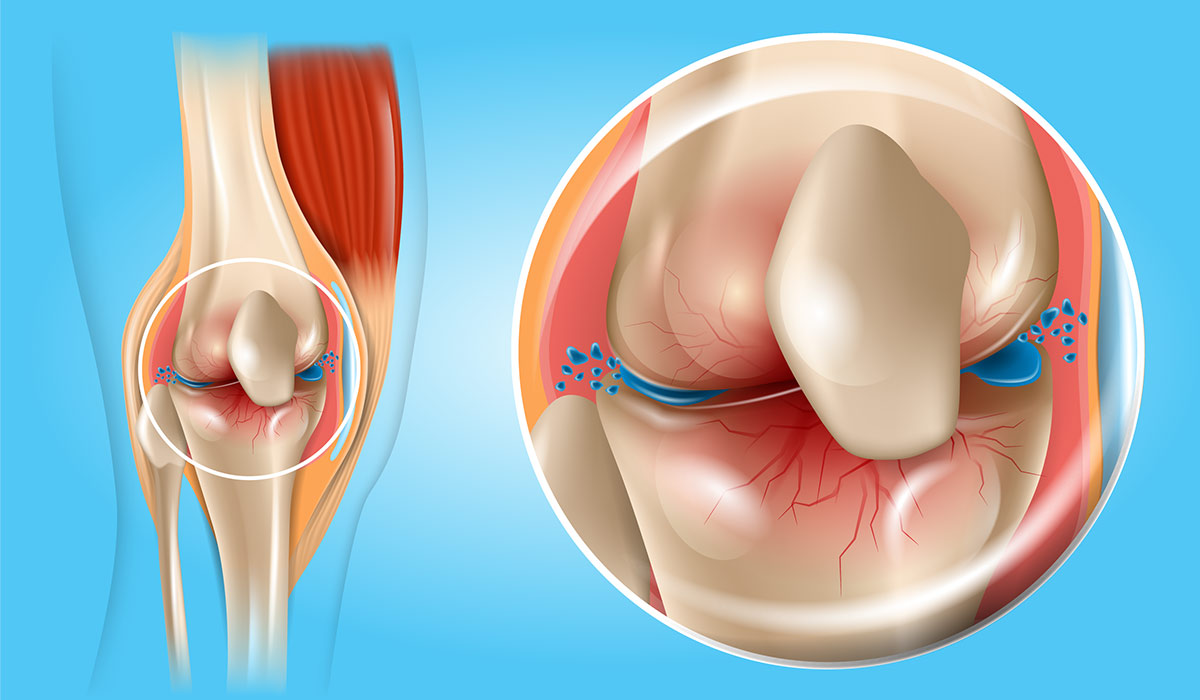
Osteoarthritis is a disease that most often affects children and the elderly. What are its causes? How can it be… read more »
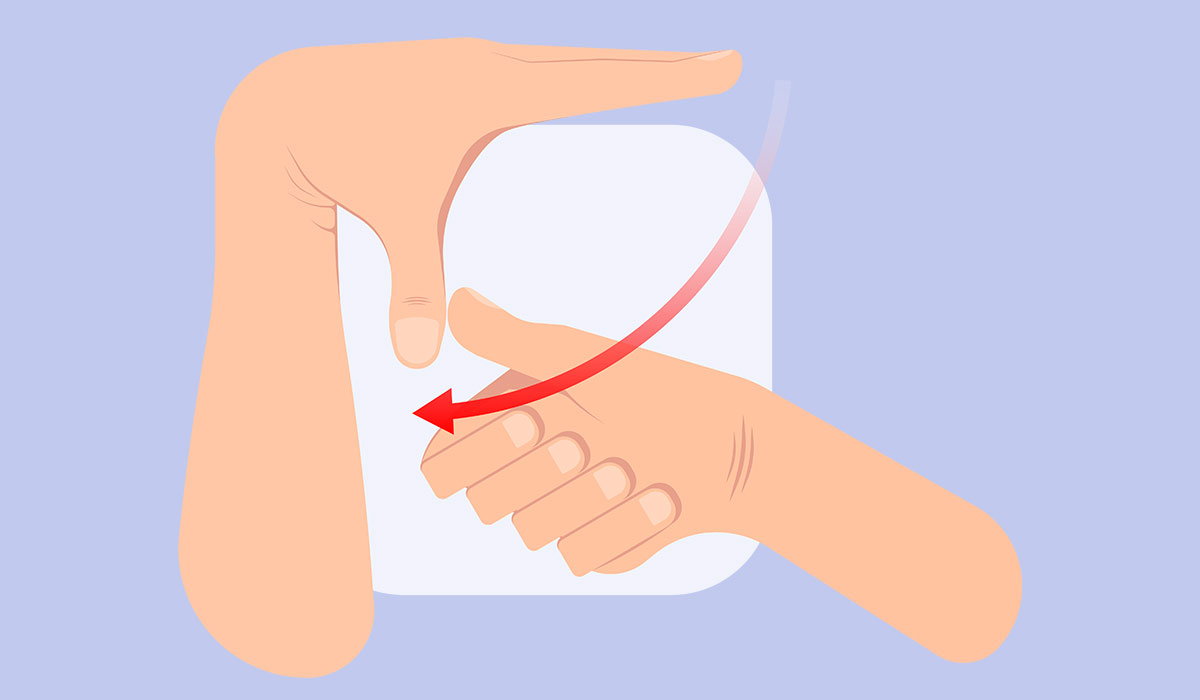
Ehlers-Danlos Syndrome is a group of diseases with a genetic basis. Learn all the symptoms associated with EDS. Find out… read more »

Pityriasis Rosea is a skin disease. It usually does not require treatment, but for pregnant women the disease can be… read more »
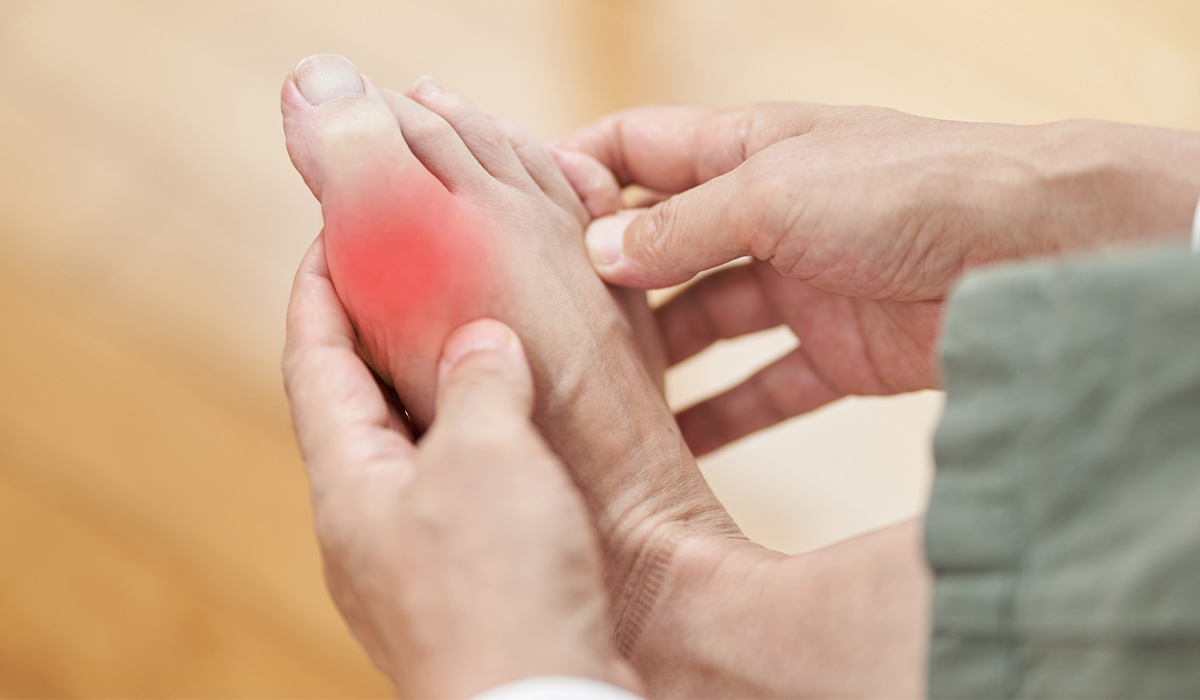
About 3.9% of the adult population in the USA is affected by gout, a painful form of arthritis that affects… read more »

Inflammation is the body's defensive response to stimuli that damage its tissues. What are the symptoms of inflammation? Find out… read more »
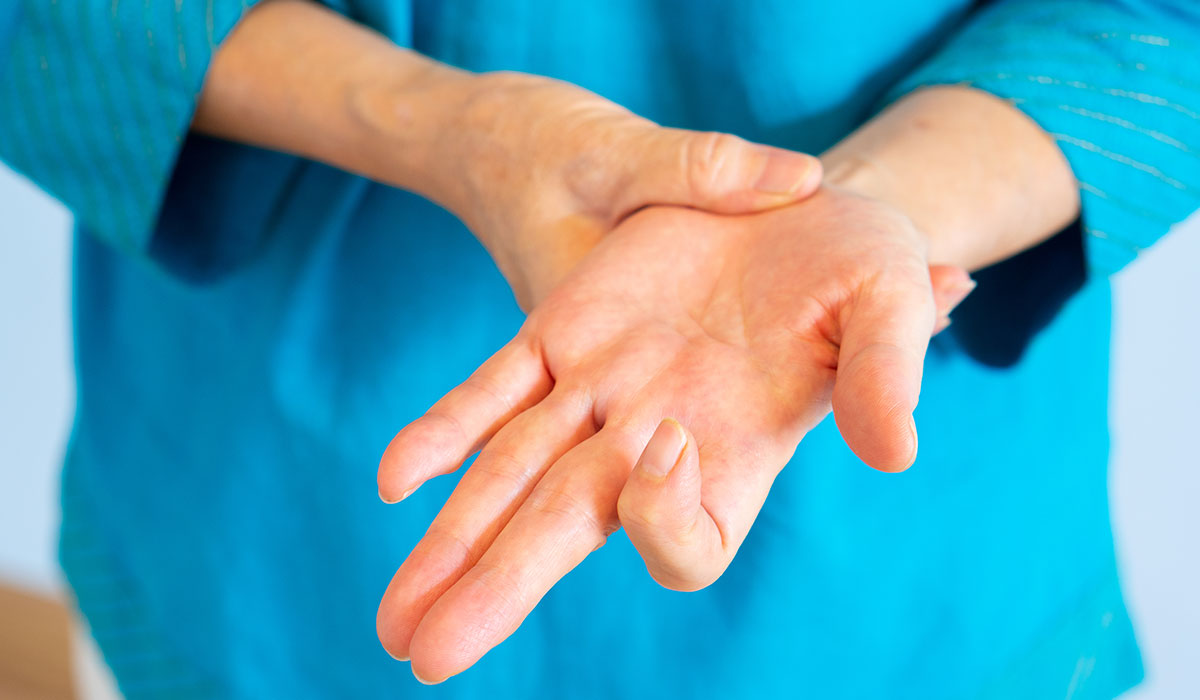
Trigger finger is a condition that impairs daily functioning. The effectiveness of treatment depends on the severity of the symptoms.… read more »